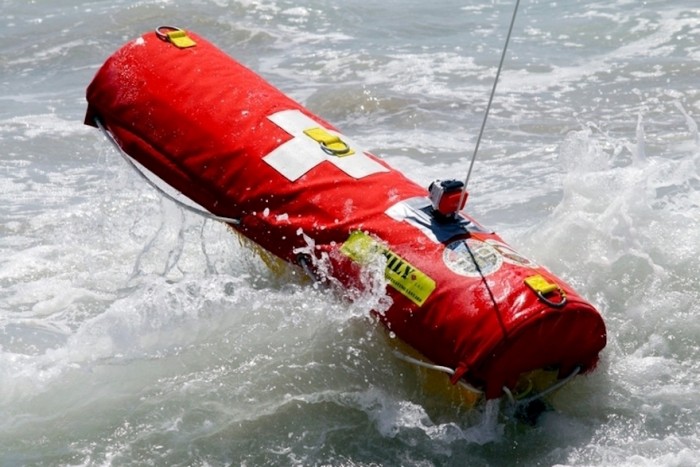
EMILY (Emergency Integrated Lifesaving Lanyard) is a robotic lifeguard that is capable of retrieving eight people in one rescue mission. Engineered by maritime robotics innovator Hydronalix, the rescue robot may be a more efficient way of getting people to safety in water-based emergency situations.
The robot is a remote-controlled buoy that can move through strong currents and rough surf at a maximum speed of 22 miles per hour. This is eleven times faster than an average person swimming at two miles per hour and more than three times faster than Olympic swimmer Michael Phelps who reaches speeds of up to 6 miles per hour. It’s fair to say that in some situations EMILY could be a more effective means of sea rescue, especially in cases where time is of the essence.
The 1.2 metre-long buoy is powered by a built-in jet pump and features no external propellers or rudders that could be of danger to victims. On the outside, there are eight handles engineered to support the weight of eight people all at once. The disadvantage of the technology is that EMILY is only able to cover a distance of approximately 1200 kilometres, meaning it can’t be deployed in long-distance rescue operations. However, it can be used to create a rescue recovery line in the water, which is used to reel in victims to safety on a rescue boat.
With a body made out of high-strength Kevlar material, the buoy is sturdy enough for navigating the roughest conditions, as well as moving in and out of rocks, debris and wrecks. Included in the design are a two-way radio, a realtime video camera that connects to an app, and lights for nighttime use.






